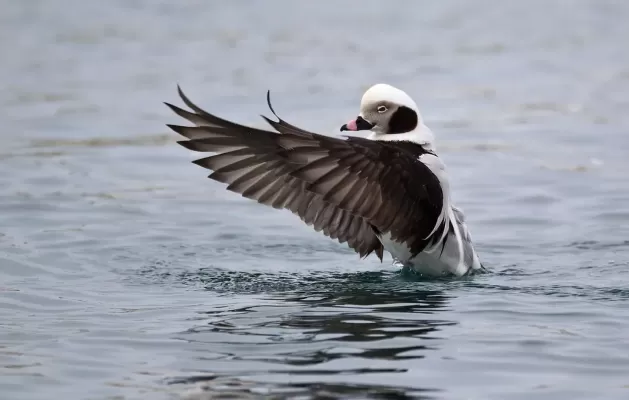White-fronted Goose (Greater/Lesser)
White-fronted Goose (Greater/Lesser)
-
Not yet spotted on Fladder
Spotted
This entry refers to both the Greater White-fronted Goose and the Lesser White-fronted Goose, two species that are similar in overall appearance, both featuring a prominent white patch on the forehead. The Lesser is notably smaller with a yellow eye-ring and a stubbier pink bill.
Where to spot
Both species breed in Arctic Eurasia. The Greater White-fronted Goose winters widely across Europe, Asia, and North America. The Lesser White-fronted Goose has a more restricted wintering range, primarily in southeastern Europe and parts of Asia. Both frequent wetlands, steppes, and agricultural lands.
How to spot
For Greater White-fronted, look for the white forehead patch and black belly bars. For Lesser White-fronted, note its smaller size, steeper forehead, bright yellow eye-ring (in adults), and stubbier pink bill. Distinguishing them in mixed flocks requires careful observation of these subtle differences in size, head shape, and eye color.
When to spot
Best observed during the wintering season (October to March) for both species. Breeding occurs from May to July in their respective Arctic ranges.
Where to spot
Both species breed in Arctic Eurasia. The Greater White-fronted Goose winters widely across Europe, Asia, and North America. The Lesser White-fronted Goose has a more restricted wintering range, primarily in southeastern Europe and parts of Asia. Both frequent wetlands, steppes, and agricultural lands.
How to spot
For Greater White-fronted, look for the white forehead patch and black belly bars. For Lesser White-fronted, note its smaller size, steeper forehead, bright yellow eye-ring (in adults), and stubbier pink bill. Distinguishing them in mixed flocks requires careful observation of these subtle differences in size, head shape, and eye color.
When to spot
Best observed during the wintering season (October to March) for both species. Breeding occurs from May to July in their respective Arctic ranges.
The Lesser White-fronted Goose is globally threatened, unlike its more common Greater counterpart. Accurate identification is crucial for conservation efforts, as distinguishing them in the field can be challenging.
Loading...
Spotted
No recently spotted birds
No observations
Loading...
Nothing spotted yet

